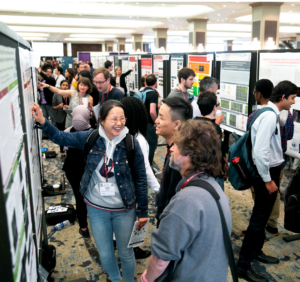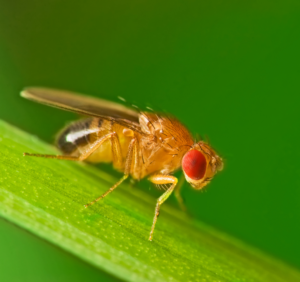Today’s guest post was contributed by Zaid Elayyan, senior Science Writer with the Air Force Office of Scientific Research. With an experienced Neuroscience background from the University of Tennessee, Knoxville, Zaid covers topics that range from thought provoking technological breakthroughs to cutting edge science discoveries. Follow him on LinkedIn.
From humid tropics to cooler temperate climates, maize is a master of adaptation, thriving in diverse environments and showcasing a striking variety of physical characteristics.
At the heart of this adaptation lies a hidden layer of genetic variation in how maize plants perceive and respond to environmental cues–factors like day length and temperature that govern maize’s most important life stage: flowering.
But, how does a maize plant know when it’s the right time to flower? And, why might two varieties, grown side by side, flower at completely different times?
A new study led by plant geneticist and ecophysiologist Justine Drouault, with support from France’s National Research Institute for Agriculture, Food and Environment (INRAE), set out to answer these questions. Their findings reshape how scientists understand maize crop adaptations–and how maize might be bred differently for the future.
Why maize looks (and flowers) so differently: The power of plasticity
Plants look, behave, and flower differently depending on their environment. At the root of this diversity is phenotypic plasticity, or the ability of genetically identical plants to develop differently across varying environments. But, that’s only part of the story.
When you layer in genetic diversity–where different genotypes have different plastic responses–the result is a rich tapestry of phenotypic variation. Even when grown in the same field, genetically distinct maize varieties don’t experience or perceive their environment in the same way. As a result, they respond differently to cues like light and temperature, leading to notable differences in flowering time.
To explore flowering time differences, and decipher maize’s perception of its environment, Drouault and colleagues developed a novel quantitative framework called Photoperiod Reaction Norm for Flowering Time Plasticity (PRN-FTP).
Deciphering maize’s perception of the environment
PRN-FTP meticulously describes how maize perceives light and adjusts its flowering schedule in different environmental conditions, specifically accounting for factors like day length and temperature.
Using a global dataset from tropical and temperate regions, the researchers found that flowering time in maize isn’t just determined by environmental conditions, but also by how each genotype interprets those conditions.
Importantly, they discovered that tropical and temperate maize follow unique flowering strategies, shaped by their evolutionary and breeding histories. Remarkably, even when grown in the same field, genetically distinct maize can flower at different times–each guided by a hidden layer of genetic variation that fine tunes its flowering schedule.
Why this matters for future breeding strategies
The study underscores an important principle: plants don’t just live in an environment; they actively sense it. Maize, in particular, adjusts its flowering time by tuning genetic pathways to environmental influences.
Insights from the study give plants breeders a powerful edge. By understanding how maize crops sense their environments, they can design varieties for shifting climates, ensuring more reliable harvests.
In deciphering maize’s perception of the world around it, the researchers open a new frontier in crop adaptation–one with the potential to significantly improve and enhance future breeding strategies.
References
A reaction norm for flowering time plasticity reveals physiological footprints of maize adaptation
Justine Drouault, Carine Palaffre, Emilie J. Millet, Jonas Rodriguez, Pierre Martre, Kristian Johnson, Boris Parent, Claude Welcker and Randall J. Wisser
G3: Genes|Genomes|Genetics.































